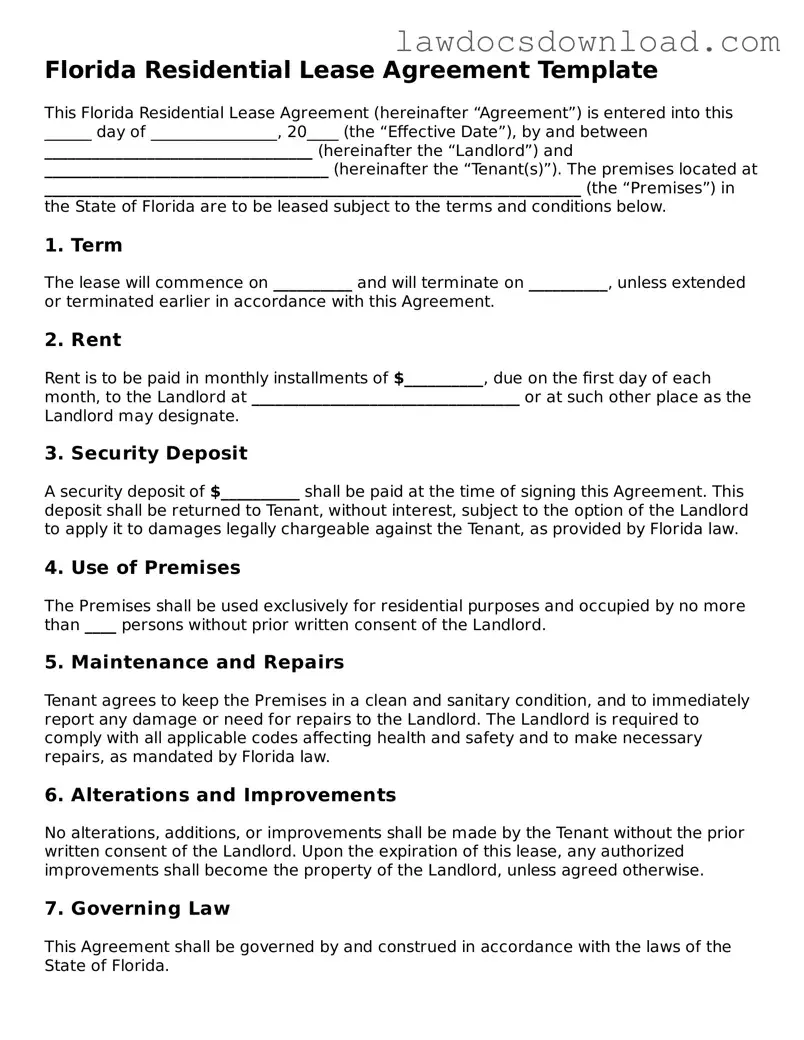Florida Residential Lease Agreement Template
This Florida Residential Lease Agreement (hereinafter “Agreement”) is entered into this ______ day of ________________, 20____ (the “Effective Date”), by and between __________________________________ (hereinafter the “Landlord”) and ____________________________________ (hereinafter the “Tenant(s)”). The premises located at ____________________________________________________________________ (the “Premises”) in the State of Florida are to be leased subject to the terms and conditions below.
1. Term
The lease will commence on __________ and will terminate on __________, unless extended or terminated earlier in accordance with this Agreement.
2. Rent
Rent is to be paid in monthly installments of $__________, due on the first day of each month, to the Landlord at __________________________________ or at such other place as the Landlord may designate.
3. Security Deposit
A security deposit of $__________ shall be paid at the time of signing this Agreement. This deposit shall be returned to Tenant, without interest, subject to the option of the Landlord to apply it to damages legally chargeable against the Tenant, as provided by Florida law.
4. Use of Premises
The Premises shall be used exclusively for residential purposes and occupied by no more than ____ persons without prior written consent of the Landlord.
5. Maintenance and Repairs
Tenant agrees to keep the Premises in a clean and sanitary condition, and to immediately report any damage or need for repairs to the Landlord. The Landlord is required to comply with all applicable codes affecting health and safety and to make necessary repairs, as mandated by Florida law.
6. Alterations and Improvements
No alterations, additions, or improvements shall be made by the Tenant without the prior written consent of the Landlord. Upon the expiration of this lease, any authorized improvements shall become the property of the Landlord, unless agreed otherwise.
7. Governing Law
This Agreement shall be governed by and construed in accordance with the laws of the State of Florida.
8. Entire Agreement
This Agreement constitutes the entire agreement between the parties and supersedes all prior understandings or agreements on the subject matter. This Agreement may be modified only by a written amendment signed by both parties.
9. Signatures
Both the Landlord and Tenant(s) acknowledge having read and understood this Agreement and hereby agree to its terms and conditions:
Landlord's Signature: ___________________________ Date: _________
Tenant's Signature: _____________________________ Date: _________
If there are additional Tenants, please have them sign below:
Tenant's Signature: _____________________________ Date: _________
Tenant's Signature: _____________________________ Date: _________
Attachments
Any addenda, schedules, or exhibits attached hereto are deemed incorporated herein by reference.
